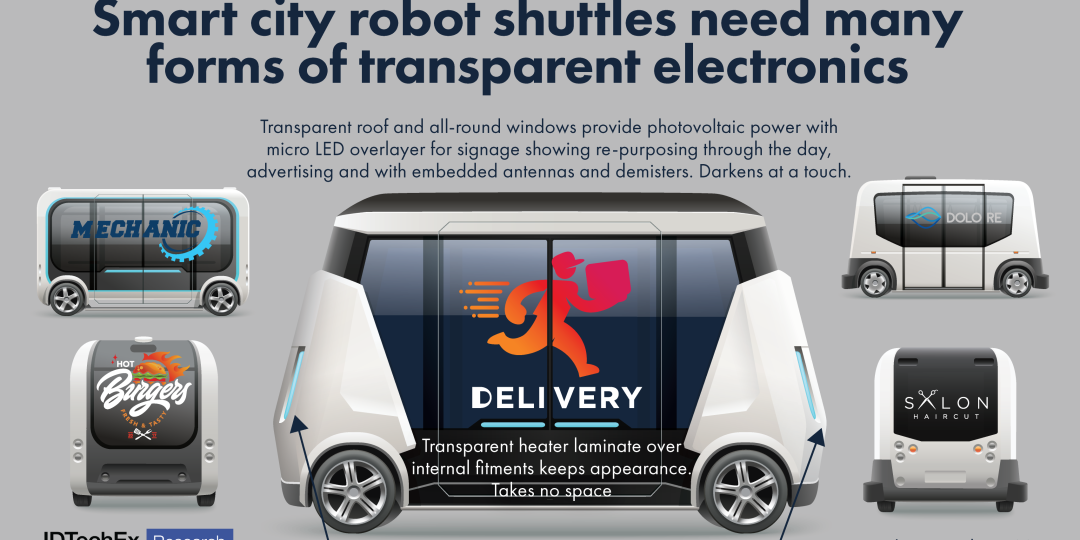The new IDTechEx report, “Transparent Electronics Materials, Applications, Markets 2021-2041” describes a market that will be well above $20 billion in 2041 with a substantial possible upside. The rapidly expanding business of transparent electronics includes transparent electrics and optronics. For example, the new LG and Xiaomi micro-LED displays will constitute the best see-through billboards with “bright images floating in the air” in planned smart cities, self-powering if another layer is added.
Here is the future of windows on and over city buildings, but also vehicles by land, water and air, and farmers’ greenhouses. It makes them multifunctional in many ways. We shall even wrap extra power generation over those vast fields of solar panels while letting them still see the sun.
More giants are becoming involved. Hyundai promises that some of its future electric cars will retain large roof windows, but its new versions will generate enough solar electricity to increase range. In 2020, Chinese railways newly deployed LG OLED train windows that have interactive, light-emitting colour displays visible when needed.
The IEA finds that 40.5% of global energy consumption is commercial and residential, mainly in buildings. NREL in the USA develops self-darkening, electricity-generating windows that will save a huge chunk of grid power because buildings will need less cooling and move towards electricity independence. IDTechEx calculates that, in the years to come, the windows of a high rise may generate as much as 0.5MW and, if they darken in response to the sun, the saving is even more considerable. Transparent photovoltaics is inherently bifacial, and manufacturer Onyx has successfully added the glass as fins at the sides of windows. North America has an increasing number of Soliculture farm greenhouses that let in the types of light that optimally grow plants while using the rest to make electricity.
Caption: Smart city robot shuttles need many forms of transparent electronics. Source: IDTechEx Research.
The transparency is achieved using transparent materials or alternatively opaque materials in patterns that let light through as with your car window antenna and demister patterns and phone touch screens, though see-through phones are only a solution looking for a problem. In Germany, a Fraunhofer institute is developing headlamp glass that steers the radar beam of driverless vehicles. VDL offers transparent heater laminate to go over the inside fitments of electric vehicles, saving weight and power, increasing range.
For more information on this report, please visit www.IDTechEx.com/TransMat













